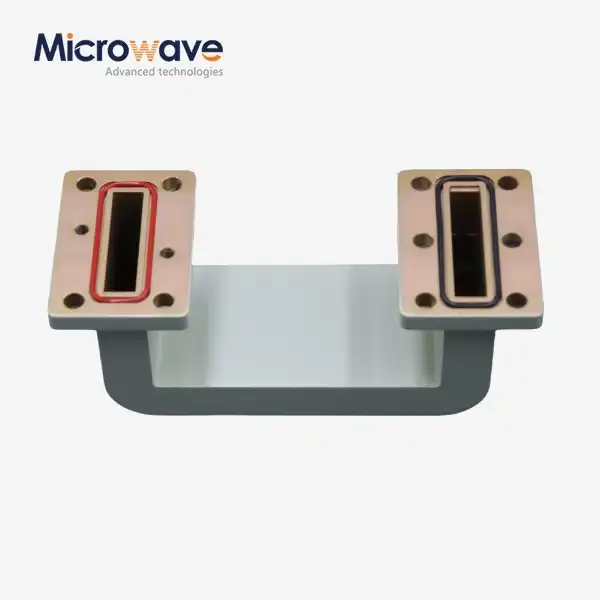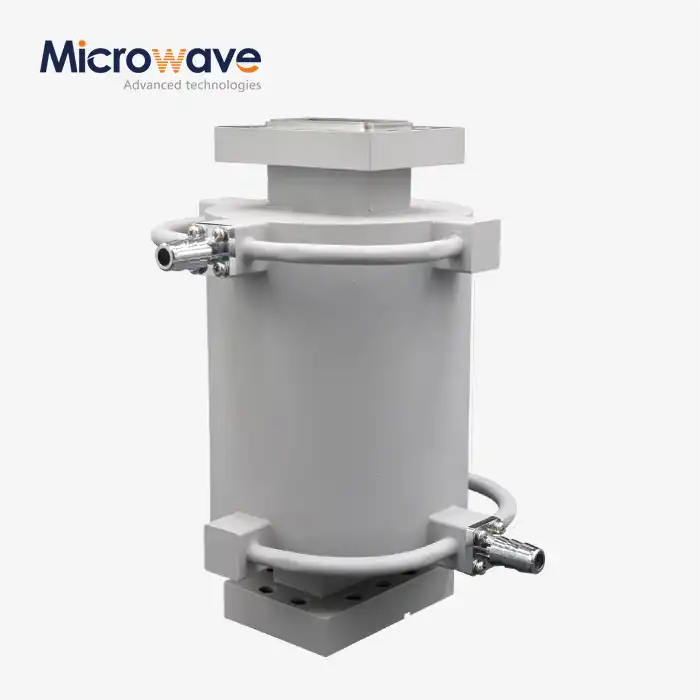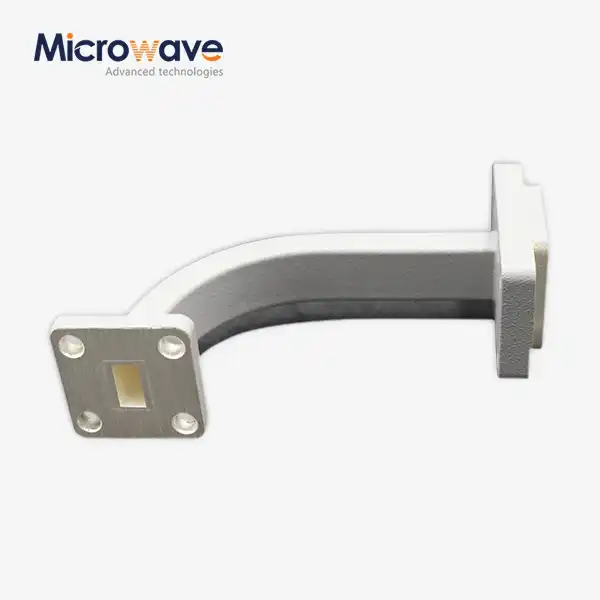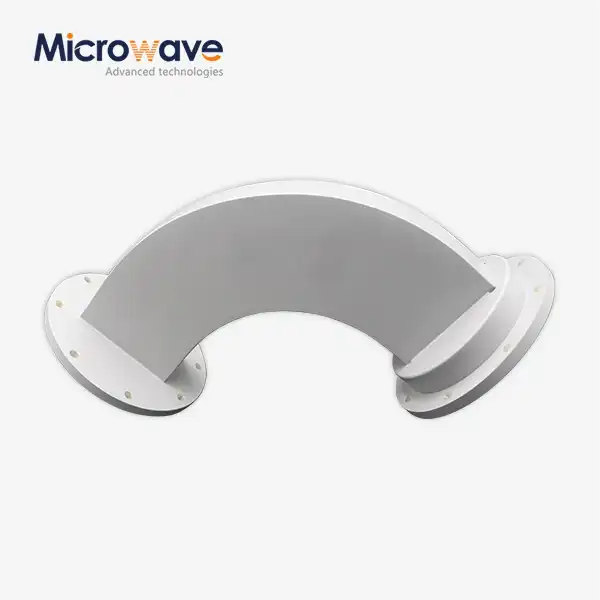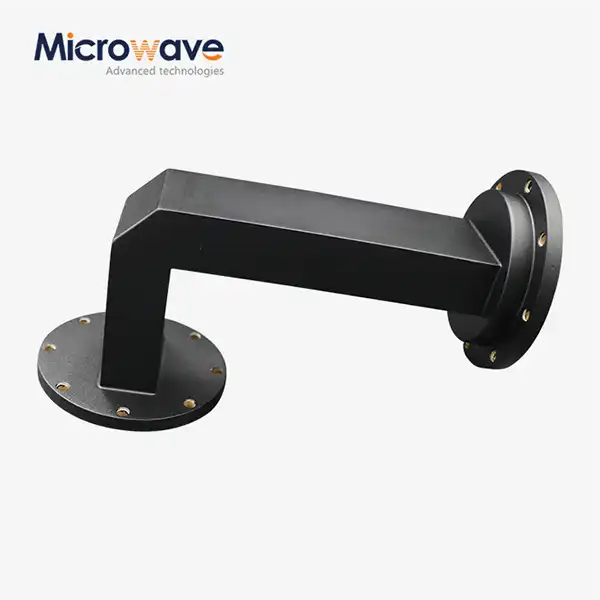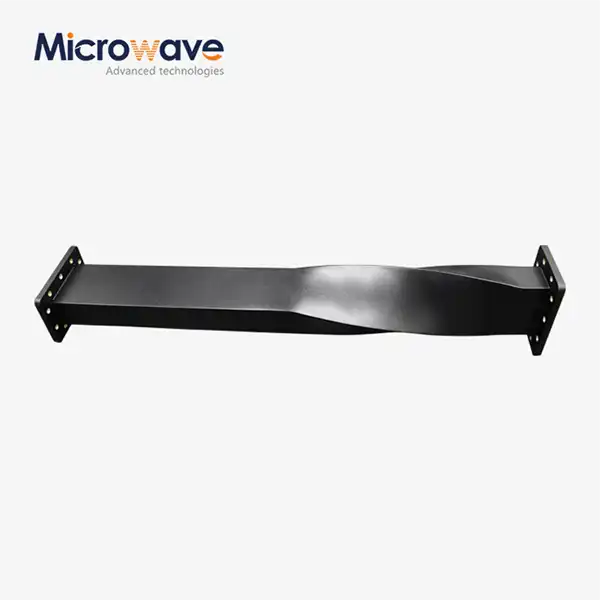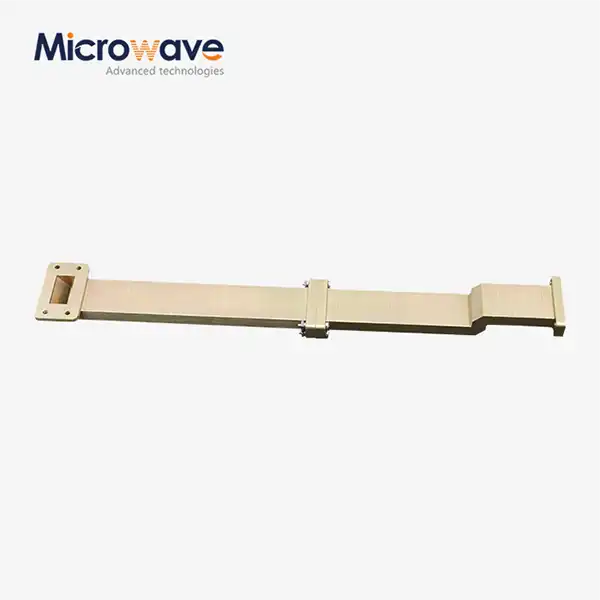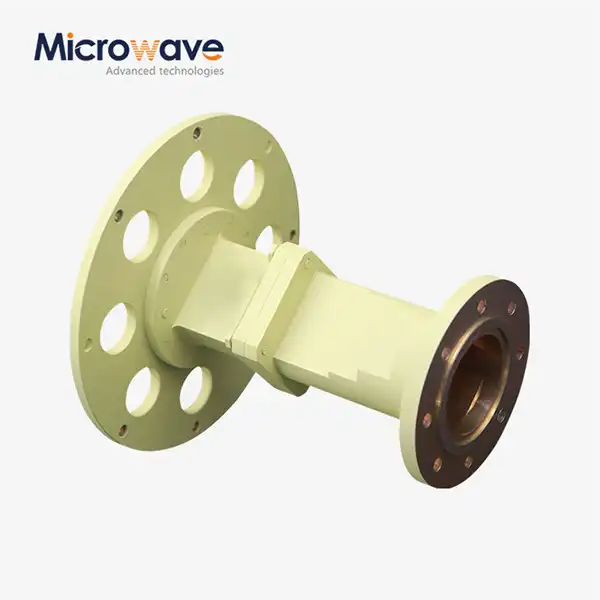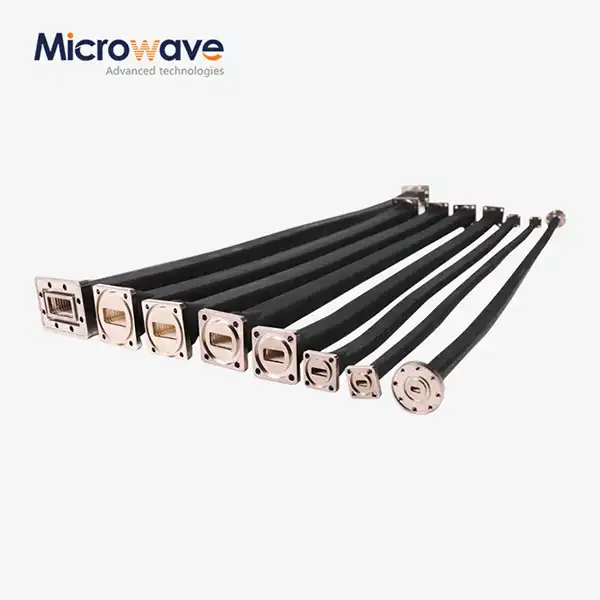Double-bend Waveguide
The layout design of the double-bend waveguide maximizes the reduction of signal reflection and loss.
Made of oxygen-free copper and other high conductivity metals, polished to minimize loss and signal attenuation.
Double-bend Waveguide Introduction
The double - bend waveguide is an optical or microwave waveguide designed with two bends, which can efficiently transmit signals along a specified path. The bends help control the direction of the signal while maintaining minimal loss and distortion, making it applicable to various communication and signal processing systems. This structure is particularly advantageous in compact or enclosed spaces where traditional straight waveguides may not be suitable.



Product Specifications
Model No | ADM-HT180WEEB12.34X49.58X6.12T1 |
Freq Range | 19.2-21.2GHz |
VSWR (Max) | 1.1 |
Insertion Loss (Max) | 0.1dB |
Material | Aluminum |
Inside Finish | Gold plating |
Double-bend Waveguide Features
- Compact Design: Its two - bend structure enables efficient space utilization, making it suitable for areas with limited room.
- Signal Direction Control: The bends direct signals along a specific path, offering routing flexibility.
- Minimized Signal Loss: Well - designed bends reduce signal attenuation, ensuring efficient, low - loss transmission.
- Reduced Interference: The bending confines the signal, limiting external interference.
- Flexible Applications: Ideal for optical, microwave, and other electromagnetic wave systems, especially in confined setups.
- Low Reflection: Careful design minimizes reflection, maintaining better signal integrity.
- Enhanced Performance in Tight Spaces: Perfect for applications where the waveguide must navigate obstacles or fit into tight spots.
Product Applications
- Microwave Comms: Crucial in radar, satellite, and wireless systems for signal routing and compact designs.
- Optical Comms: Directs light signals in fiber - optic systems through tight paths.
- ICs: Used in integrated photonic and MEMS circuits for low - loss signal routing.
- Sensors: Helps with space - saving and precise signal guidance in optical sensors.
- Medical Devices: Delivers light/signals in endoscopy through complex pathways.
- Laser Systems: Shapes and routes laser beams, enhancing performance.
- Antenna Systems: Redirects signals, improving efficiency and coverage.
- Quantum Computing: Guides quantum info with minimal loss and error.
OEM Services
Advanced Microwave Technologies Co., Ltd. (ADM) may offer OEM services for double - bend waveguides. These likely include custom design based on clients' application needs, prototype development, expert material selection, precision manufacturing, comprehensive testing, integration into larger systems, mass production after prototype approval, and post - production support. Contact ADM directly for details on their capabilities and your requirements.
FAQ
1. What is the main advantage of a double - bend waveguide in terms of space utilization?
The main advantage of a double-bend waveguide in terms of space utilization is its ability to efficiently route signals in compact spaces, reducing the overall system footprint while maintaining performance.
2. How does a double - bend waveguide help in signal direction control?
A double-bend waveguide helps in signal direction control by using two bends to redirect the signal through different paths, allowing precise control over the direction of the electromagnetic wave without significant loss or distortion.
3. What materials are commonly used for double - bend waveguides?
Common materials used for double-bend waveguides include copper, aluminum, and bronze for metallic waveguides, as well as dielectric materials like Teflon or ceramics for specific applications requiring lower loss and high performance.
Contact Us
For more information about the Double-bend Waveguide, please feel free to contact us at sales@admicrowave.com. Our team is here to provide you with the best solutions tailored to your needs.




